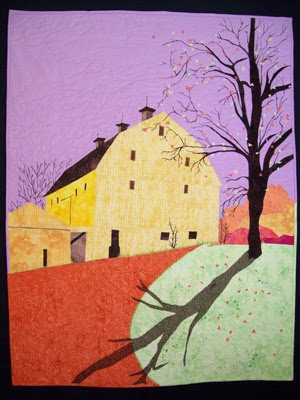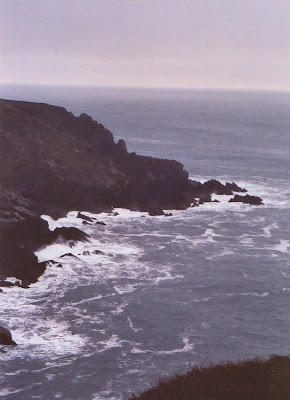I was both honored and blessed to have served as Artist in Residence at Poinsett State Park in South Carolina last week. I just love this state and their parks are amazing. If you haven’t been you should. I had the privilege of staying in one of the newly renovated cabins built by the CCC during the depression. Blocks of Coquina, a conglomerate of sea shells proving South Carolina was once submerged under a great sea, were used as a building material for foundations, fireplaces and picnic shelters, making the architecture something special.
In exchange for staying in such beautiful accommodations, artists are required to provide the park with a piece of artwork within 3 months of their stay. These pieces are featured throughout the park in various cabins and the park office making it a very artistic place to make art. I had the notion before leaving Ohio that my textile piece would feature a Revolutionary War era figure of some sort, perhaps a certain Levi who apparently ran a mill on what now is Poinsett State Park.
Let’s face it, if like me you attended public school north of the Mason Dixon Line, you had no idea that the South was even involved in the Revolutionary War. All that business took place in New York, Philadelphia, Boston, Lexington or Concord, right? That is all we learned about in school. You probably never heard of Ninety-Six, Cowpens, The Battle of Charleston or King’s Mountain. Another reason to get out and enjoy our public lands and learn the real history of our nation. The South is just dripping with history including the prominent role South Carolina played in the birth of our country.
Earlier in the week I learned from one of the rangers that my information about Levi was inaccurate. He did run the mill, but not until the 1800’s. It was Mr. Matthew Singleton, lately of The Isle of Wight, in 1754 that is, who built and ran the mill, the ruins of which can still be seen today at one end of the lake. The lake and spillway were originally built by Matthew to flood the rice fields located between where the current park is situated and his plantation, Melrose, just a few miles away.
Although the plantation has since burned to the ground, I was informed there was a historical marker and family cemetery containing the earthly remains of Matthew Singleton and his family at the site. I hope you never have the bad luck to be driving behind me when I spot a historical marker. Undoubtedly you will be cursing as I unexpectedly and rapidly veer off the roadway without advanced warning. So I just had to go.
I googled the directions to the Melrose site and headed out. I should mention two things here: get a block off the highway in this neck of the woods and you are on dirt roads, well red sand roads actually, and it had been raining for two days and two nights at this point in time. I headed out and proceeded down the road indicated on the map, it turned out to be red dirt with a few houses on the right. About a mile down the road the houses petered out and the road got narrower and wetter. Now growing up in the 50’s darn near every movie featured someone who had disappeared in quicksand leaving only a hat floating on the surface. I was pretty certain the scientific recipe for quicksand was one part sand, two parts water, which fairly accurately described current weather conditions. Prudently, I decided not to continue on in this particular adventure and drove in reverse a mile back down the road I came in on rather than become the star of my own movie.
Now all week-long everyone kept telling me I needed to meet Zabo McCants the head ranger. The next day I finally did and what a pleasure. I told him about my attempt at exploration and he confirmed my decision to change course as a wise one. He advised me that “they never mow the grass in the cemetery and there are snakes up there, (see my previous blog about snakes)” South Carolina boasts 6 varieties of venomous snakes: three different kinds of rattlers, Copperheads, Coral Snakes and the notorious Cottonmouth. Point taken.
Zabo is quite a visionary and driven to excellence in everything he does. He takes great pride in his plans to remodel the park’s cabins, even down to matching the color of the dish soap to the coffee mugs. He is a local boy done good and an authority on local history. Well he should be, he is a direct descendent of Brigadier General Richard Richardson, a Revolutionary War hero and patriot who hung around with the likes of The Swamp Fox, married into the Singleton family and had a run in with British villain Banestre Tarleton (check out the movie The Patriot with Mel Gibson for the gory details). He additionally informed me that whenever he goes up to the Melrose site he kits himself up in full state park uniform, “So that everyone knows who I am and why I am there.” Well if that is necessary for him, considering who his people are, what chance would I have had if the locals had found out that my “people” included a teenaged German private from Ohio named John Ruhl, who tagged along with one William Tecumseh Sherman as he marched to the sea? Another crisis averted and more fodder obtained for the piece I create for the park. What more could one ask for?





















